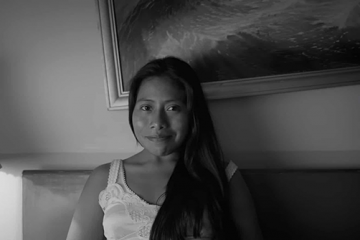Amelie Hastie at Film Quarterly:
 If the experience of my viewing of the film was gently yet insistently altered over the space of two hours, upon its end I experienced a kind of revelation. As I stared at the final image—a still shot of the exterior staircase that Cleo has climbed, itself a return to the opening scene—a thought occurred to me: It is as if I have just seen cinema for the first time.
If the experience of my viewing of the film was gently yet insistently altered over the space of two hours, upon its end I experienced a kind of revelation. As I stared at the final image—a still shot of the exterior staircase that Cleo has climbed, itself a return to the opening scene—a thought occurred to me: It is as if I have just seen cinema for the first time.
This idea came to me involuntarily, immediately followed by a sense of internal embarrassment over such unexpected pretentiousness. Yet as I left the crowded theater and walked down the street, slowly approaching the park in front of me, I could not shake this idea; again and again, with a sense that I could not even control it, I repeated it in my head. I wondered, too, if this sensation might have been what it felt like to see Rome, Open City (Roma città aperta, Roberto Rossellini, 1945) or The Rules of the Game (La règle du jeu, Jean Renoir, 1939) when they first appeared on-screen.3 Its black-and-white stock and historical setting give Cuarón’s film the sense of belonging to another time, but it wasn’t just that which struck me. Roma has the breadth of these films, and at the same time, the intimacy of everyday (or sometimes singular) experience in the midst of political tumult.
more here.
